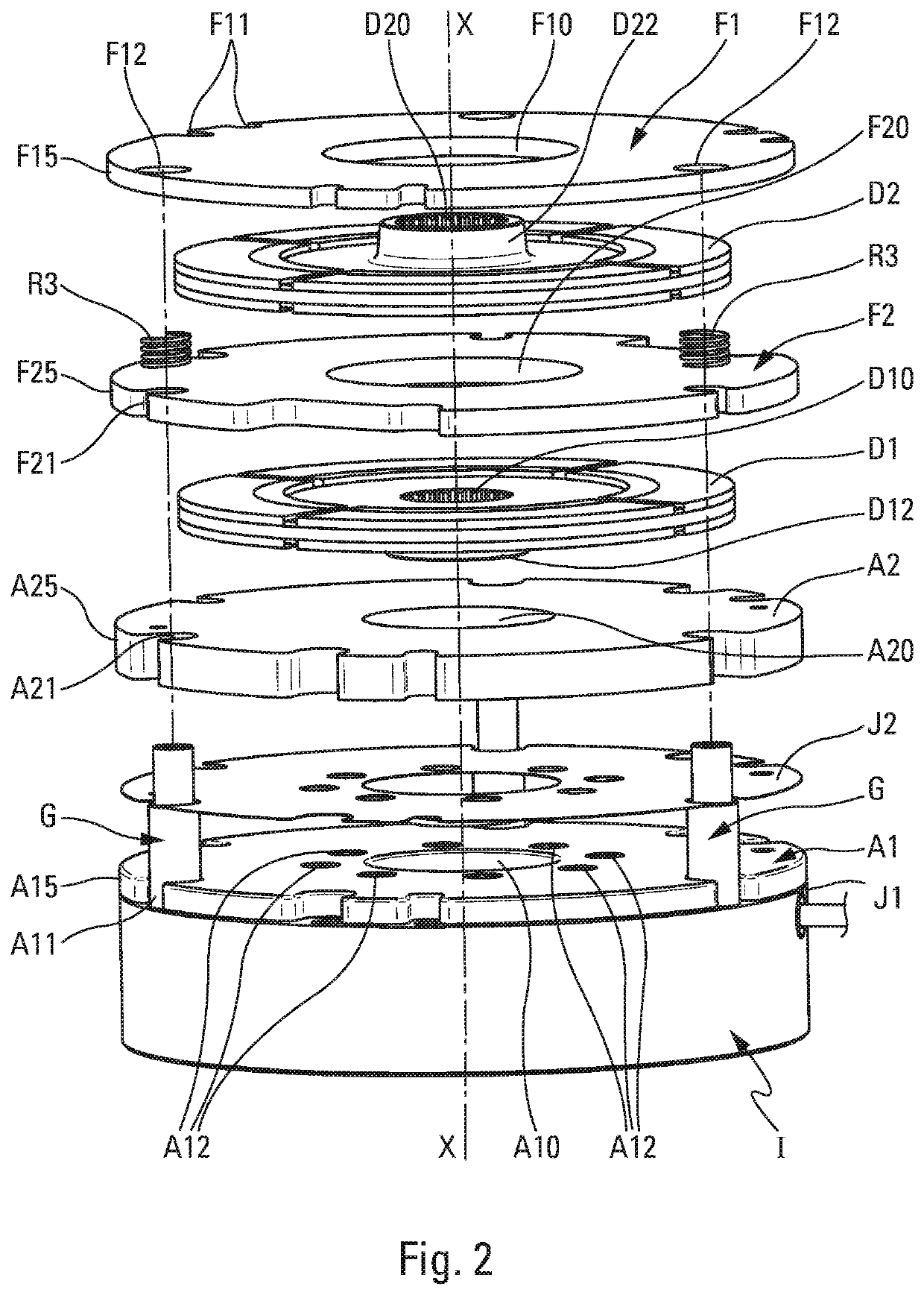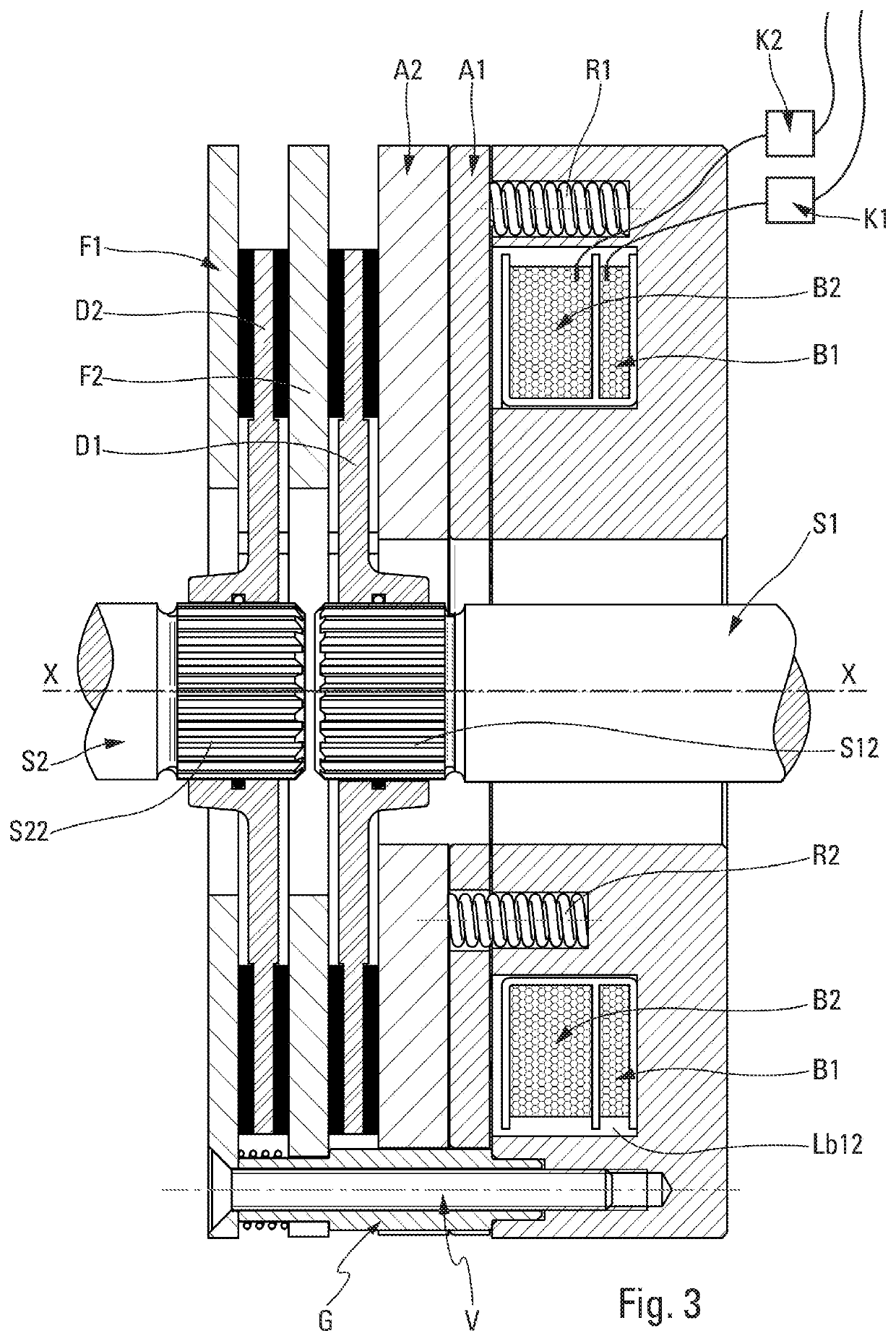Stepped Torque Braking Device
- Summary
- Abstract
- Description
- Claims
- Application Information
AI Technical Summary
Benefits of technology
Problems solved by technology
Method used
Image
Examples
Embodiment Construction
[0033]Reference is made first to FIGS. 1 and 2 for a detailed explanation of the structure and operation of the electromagnetic braking device for a rotary shaft of the invention.
[0034]The electromagnetic braking device of the invention, in the first embodiment of FIGS. 1 and 2, is mounted on a single rotary shaft S, which comprises a splined shaft end S0. This shaft S can for example be driven in rotation by an electric motor. The electromagnetic braking device of the invention comprises first of all an actuation unit or inductor I which comprises a housing C that is annular (cylinder) or rectangular (parallelepiped) defining an axial central passage 110 and at least one annular (or elliptical) receptacle Lb, wherein at least one winding (or inductor winding) B of conductive wire is received. This housing C, which is sometimes designated by the term “shell,” also comprises several blind bores Lr1, Lr2 each of which receives a compression spring R1, R2. These springs R1, R2 are adva...
PUM
 Login to View More
Login to View More Abstract
Description
Claims
Application Information
 Login to View More
Login to View More - R&D
- Intellectual Property
- Life Sciences
- Materials
- Tech Scout
- Unparalleled Data Quality
- Higher Quality Content
- 60% Fewer Hallucinations
Browse by: Latest US Patents, China's latest patents, Technical Efficacy Thesaurus, Application Domain, Technology Topic, Popular Technical Reports.
© 2025 PatSnap. All rights reserved.Legal|Privacy policy|Modern Slavery Act Transparency Statement|Sitemap|About US| Contact US: help@patsnap.com



